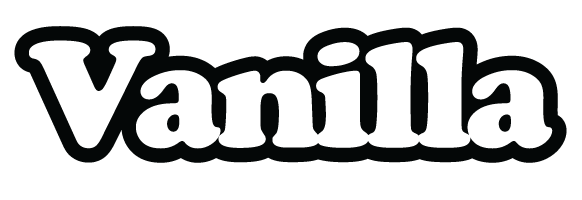Stephanie YuHsuan Chen is a young designer exploring the boundaries of vulnerability and femininity in fashion. Her work celebrates the delicate aspects of the feminine and examines the duality of womanhood; questioning, what does it mean to be a woman in today’s world?
After completing her MFA from Fashion Institute of Technology in New York, Stephanie has honed her craft working with designers such as Prabal Gurung, Narcisco Rodriguez, and Caron Callahan. We recently spoke to Stephanie about her latest work, her inspirations, and her plans for the future.
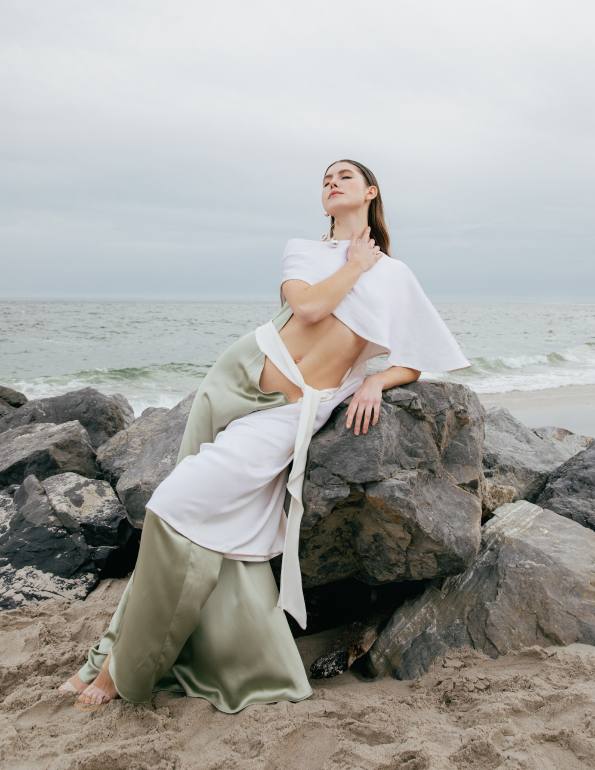
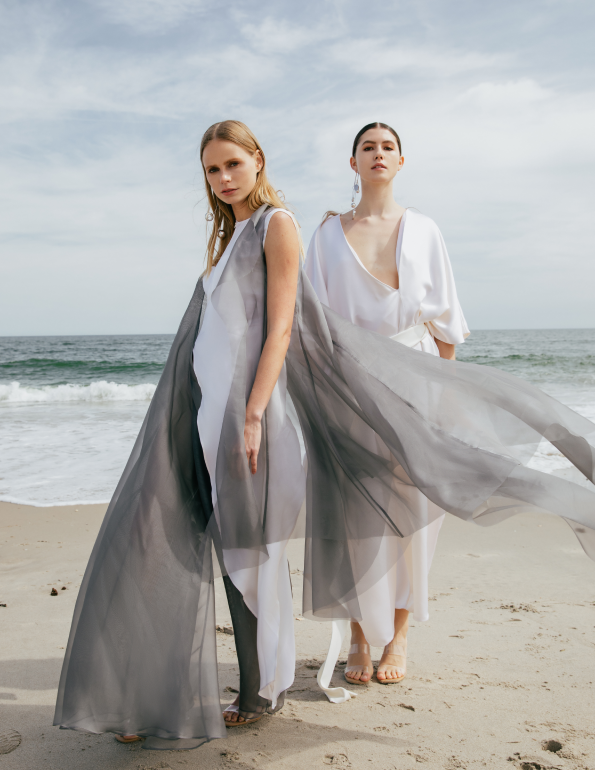
Your work often focuses on vulnerability, what does this word mean to you? How does it inform your design process?
The main inspiration for this collection was to really look back into my design manifesto of “Soft and delicate on the outside. On the inside she holds passion, strong and untouchable. A sophisticated warrior.” originally inspired by my mother as the first muse of this collection. I looked into the way she dresses and how her style contradicts her personality as a strong independent woman. The word “vulnerable” means two things after observing my mother, ‘unveil’ or ‘vulnerably bold’. And that is where I decided to create a harmonious line between bold and feminine throughout the collection.
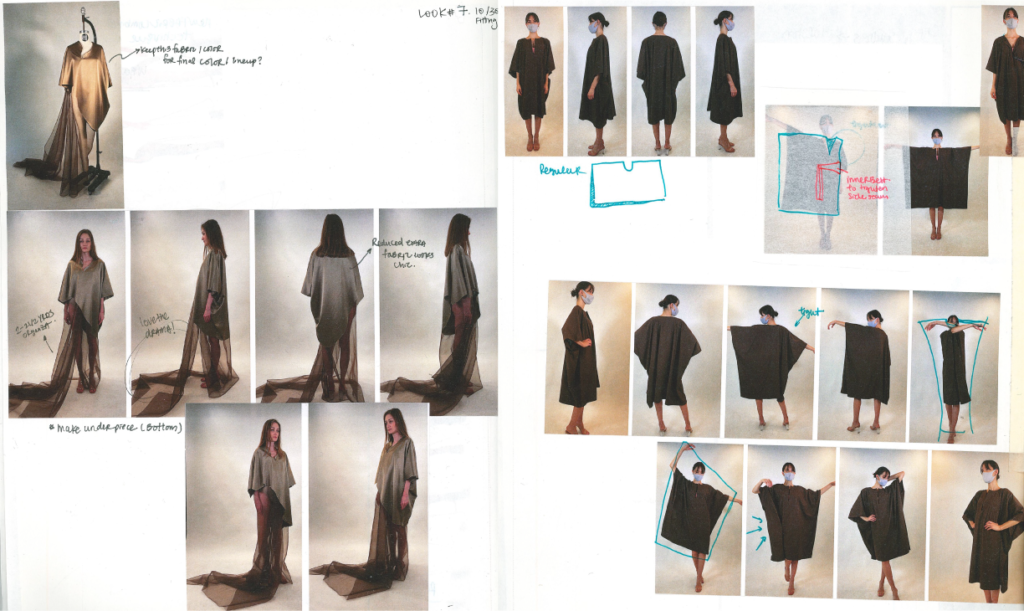
Your recent collection titled For Her features beautifully soft silhouettes and delicate fabrics. What was the process like of developing these looks?
For this specific collection, I worked with photography on lights and shadow to start off my initial approach to silhouette development. With the intention of exploring a 2D shape carved on cardboard, and projecting by spotlight onto a live model’s body. For prototyping, there was a lot of playing around on patterns and live-model fitting, cutting shapes directly on the prototypes and then remaking them in new adjusted patterns, then deciding on placement of different weights of fabrics. I never sketch first, I have to work all dimensions on a form in order to visually help myself create these asymmetrical looks.
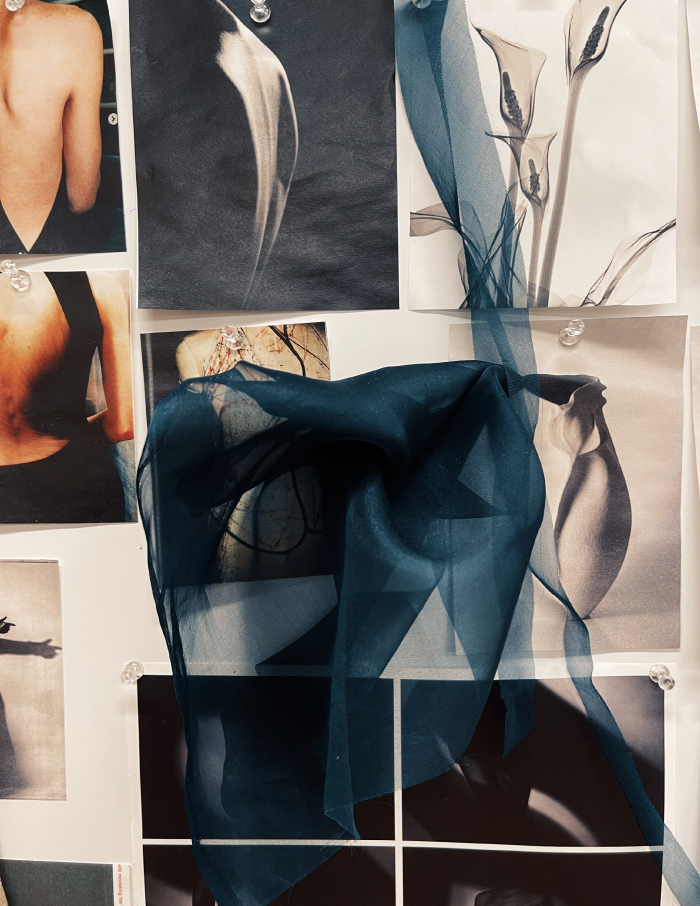
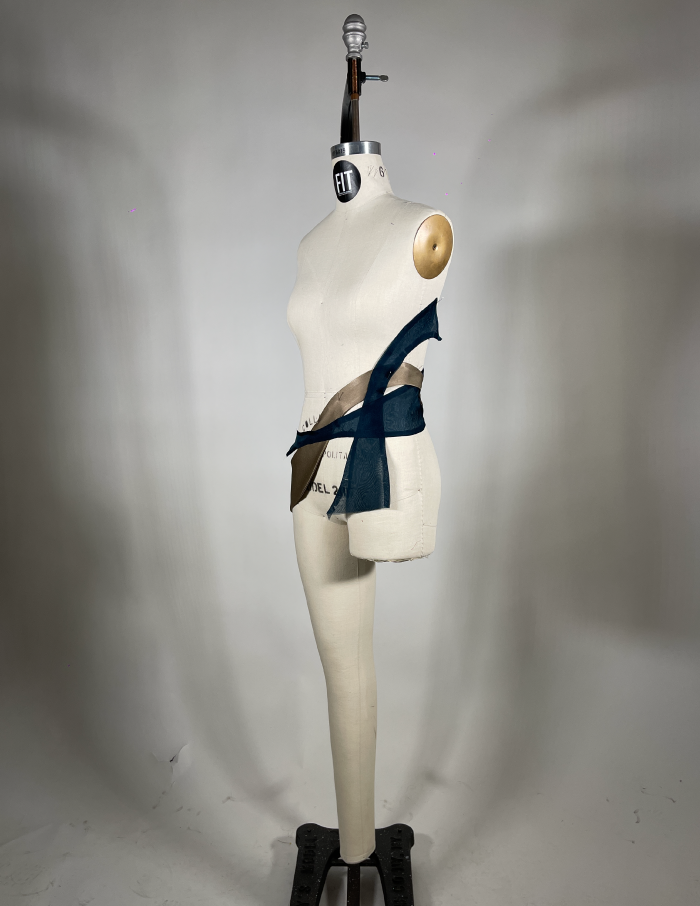
How does fabrication inform your design and what role does sustainability play in your work?
I used a lot of silk-based fabrics, crepe back satin, silk organza, silk charmeuse, silk back twill. More than half of them were leftover fabrics donated by a designer I used to work with. By using their exquisite luxury fabric, I wanted to deliberate the reason behind using these fabrics showing craftsmanship, and the attentive work behind each elegant, intricate look. Resonating the sophisticated woman wearing it with strength and vulnerability, and how the products were also made by people behind the scene in a very delicate, careful way.
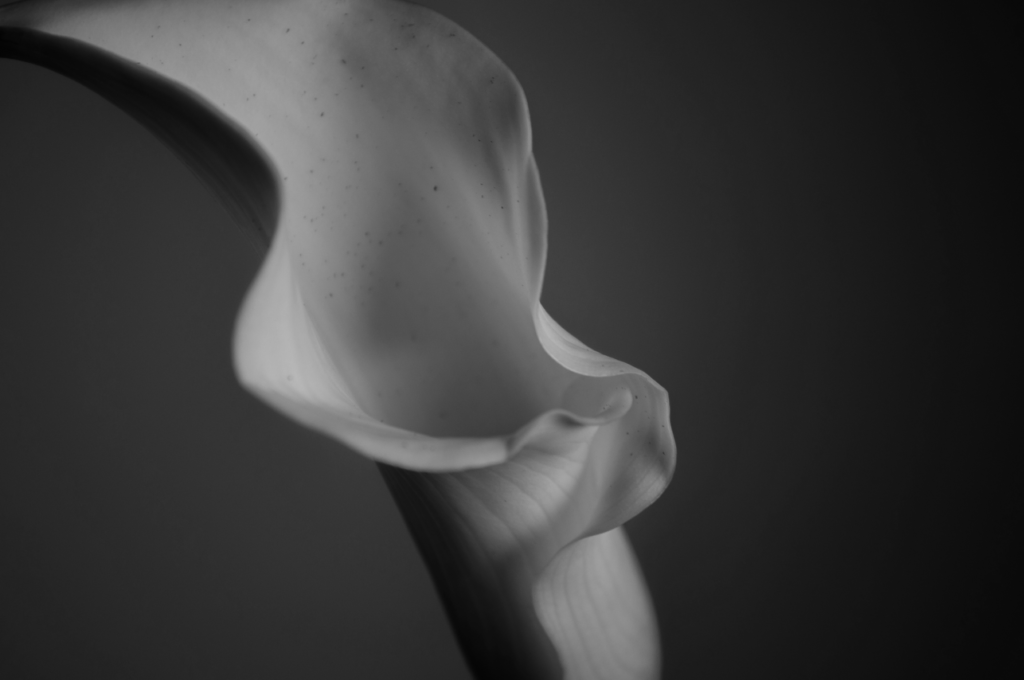
Your colour palette in this collection consists of neutral tones, what informed this decision?
The colour palette of this collection was extracted from the Taiwanese plum blossom. The flower itself symbolizes perseverance, hope, beauty, purity, and the transience of life. And most importantly, the flower represents “resilience”, a phrase I applied to the women I design for in this collection, as well as reflecting my personality.
We’d love to know more about each look, is there anyone that especially stands out to you?
With the collection executed by delicate fabric, each look was given a name, and reason of being for its personality to express the fluid and feminine line I would always circle back to during my design process. Each look has its bold, sophisticated and powerful edge contracting to delicate and softness. For the process and evolution of the 8 looks, I name them individually after Greek female names with a reason for being and personality behind each look. As Queen Gorgo of Sparta once said, “We are the only ones who give birth to men, ” representing the power that women hold in ancient Greek culture and echoing back to women who are resilient in my design universe.
Tell us more about how the female form informs your design process. Do you see yourself exploring menswear in the future or do you prefer to see your practice as an exploration of female vulnerability?
As I mentioned earlier, I work around the curves around my body a lot during my design process, which is something a female form was naturally given more than a male body. I did try to work with menswear briefly during my exploration stage at FIT, I found myself constantly going back to the drapey, flowy, feminine design aesthetic. And that’s when I confirmed that I am more of a dressmaker than a menswear designer. However, I am open to all possibilities in the future.
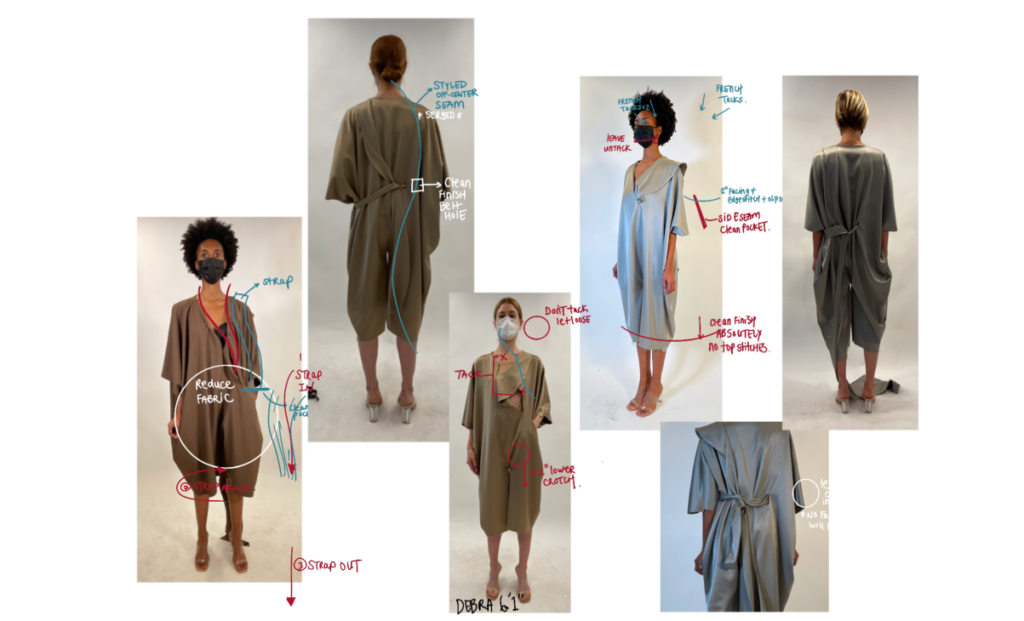
Were there any techniques you learned during the creation of this collection that you will carry further into future collections?
For technique exploration, by experimenting with details such as these styled fabric stripes intersecting through the body, the revealing part is a statement of her bold, and sophisticated side. The collection generates the idea of creating harmony in technique while the women wearing these look comfortable but powerful. And because of how delicate and fragile these fabrics were, another signature technique for this entire collection was not to have any sort of closures and openings on any looks. This means the look was either stepped in or tie as a solution to prevent the freedom of fabric flow.
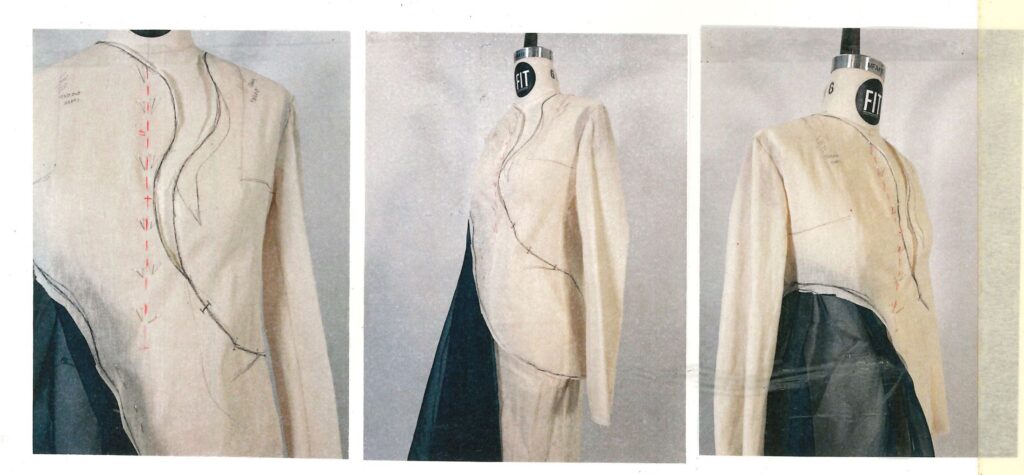
Has creating this collection changed anything in your design process? What did you learn from this that you will continue as a designer?
I’ve made some breakthroughs during the process of designing this collection. I was a bit hard-headed on focusing more on designing wearability and sellable clothes. There was a point where I got really bored looking at the initial prototype line-ups, with the help of my MFA professor after a few textile explorations exercises, it helped my process from a line-up of flat, well-made dresses, to a line-up of high-end womenswear made of lightweight fabric, but elevating these classic minimalist style fabric by creating layers and depth with it. There is still so much more I wanted to expand from this design process, however, due to time, some experiment was only explored halfway, there were crazy things like sculpturing, making accessories… etc. I think I want to take on this “unfinished business” and continue to create new collections with a merge of high-end wearable womenswear and experimental accessories.

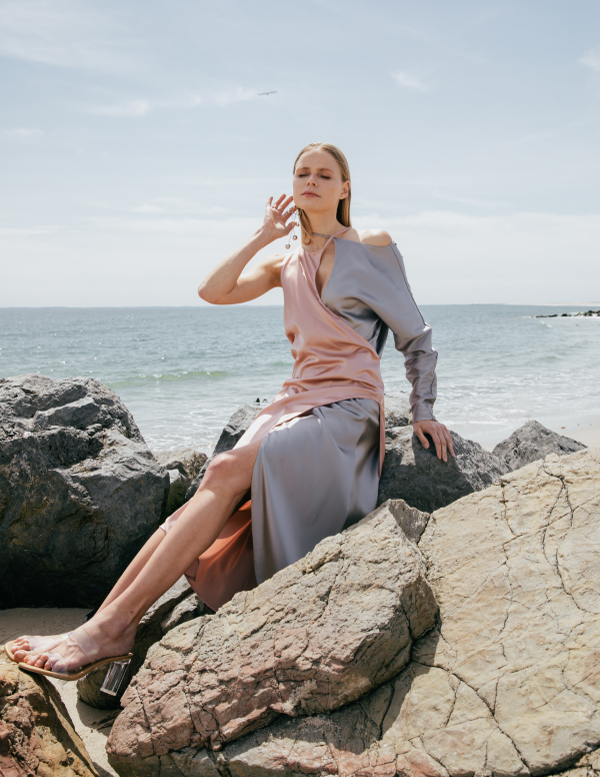
How do you envisage furthering your brand? In the global space do you see your work as growing into the commercial space or do yourself creating one-off experimental pieces?
In the world we’re in right now, fashion because it is such a fast-paced industry where everyone’s constantly looking for evolution and change, and to design what others have not come up with but always referring to the past for inspiration. Right now, especially post-pandemic, the industry is not just looking for a revolution in new collections; people now tend to focus more on selecting timeless and seasonless pieces. “Trend” is a questionable word for me; it is a really important aspect to me to create clothing with a purpose of it existing in a person’s closet.


Where can we expect to see you in 5 years?
I would really like to see myself continue learning and growing in a design position in a luxury fashion house for the next 5 years. I’ve had goals for myself to be a senior designer/ design manager role in 5 years. I want to be able to establish long-term growth alongside the company I work for, at the same time slowly establish my own brand by starting a made-to-order small business and slowly build myself up with my own creations.
To see more of Stephanie’s work visit her Instagram here or visit her website here.
Photography Deanna Long
Model 1 Irene Stepanenko
Model 2 Liliana Bogart
Production/Styling by Anne Yu-An Chen
Hair/Makeup by Antionette Greenwood
Shoot Assistant Dan Fang
Accessories by Youna Jin

